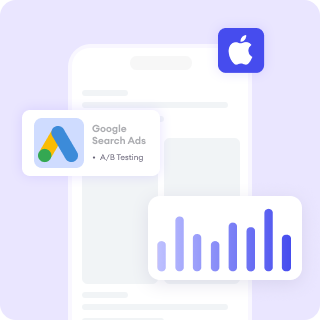One common roadblock often arises when doing SEO, which is How do I choose the right keywords?
Should I focus on broad, popular short-tail keywords, or zero in on specific, less-searched long-tail phrases?
Many people struggle with this question, not knowing on how to balance the high traffic with the potential for meaningful conversions.
Long-tail and short-tail keywords each have distinct benefits and challenges, and understanding how they work—and when to use them—is the first step toward crafting an effective SEO plan.
In this guide, learn how to differentiate between short-tail keywords and long-tail keywords, and how to use them to improve your website.
What Is A Short-Tail Keyword?
Short-tail keywords usually compromises of one to two words, the terms are broad and highly competitive. Think of phrases like "shoes" or "digital marketing." They’re concise, often high in search volume, and attract a vast audience.
However, with great power comes great competition. Ranking for short-tail keywords can be hard and challenging, especially for smaller or newer websites.
Advantages of Short-Tail Keywords
- High Search Volume: These terms generate significant traffic, making them a magnet for visibility.
- Broad Reach: Ideal for building brand awareness and attracting a general audience.
- Simple and Memorable: Easy for users to search and for marketers to integrate into content.
Challenges of Short-Tail Keywords
- Intense Competition: Dominated by industry leaders, short-tail keywords require substantial resources to rank.
- Low Conversion Rates: Broad intent means users may not be ready to purchase or engage.
What Is A Long-Tail Keyword?
Long-tail keywords uses three or more words, where these phrases are specific and cater to niche audiences. Examples include "comfortable running shoes for women" or "best digital marketing courses online." While their search volume is lower, long-tail keywords often boast higher conversion rates due to their precise intent.
Advantages of Long-Tail Keywords
- Lower Competition: Easier to rank for, especially for smaller or localized businesses.
- Higher Conversion Rates: Specificity means users are often further along in the buying process.
- Aligned with Voice Search: With the rise of virtual assistants, natural, conversational queries are increasingly popular.
Challenges of Long-Tail Keywords
- Lower Search Volume: They bring in less traffic, which may not suit brands targeting mass awareness.
- Effort in Research: Identifying the right long-tail keywords requires detailed analysis and understanding of your audience.
Choosing the Right Keywords for Your Strategy
The key to a successful SEO strategy isn’t choosing between long-tail and short-tail keywords but knowing how to balance and deploy them effectively.
When to Use Short-Tail Keywords
Brand Awareness
Short-tail keywords are perfect for businesses that want to increase visibility and reach a wide audience. For example, if you sell athletic shoes, using a short-tail keyword like “running shoes” helps introduce your brand to anyone searching for shoes in general.
Example:
- A new sportswear brand may target the keyword “sports clothing” to ensure they’re seen by a large group of people, even if they don’t yet know about the brand.
Early-Stage Marketing
When you’re launching a new product or service, short-tail keywords help attract a large number of visitors who might be interested in your offering. They are great for drawing traffic to new landing pages, blog posts, or product categories.
Example:
- If you're launching a new line of eco-friendly sneakers, targeting “sustainable shoes” helps you gain traction and awareness in a competitive space, even if the users aren't immediately ready to buy.
When to Use Long-Tail Keywords
Conversions
Long-tail keywords are perfect when you want to guide users who are further along in the buyer's journey. These people are more likely to convert because they have a clear intent. For example, someone searching for “best running shoes for flat feet” knows what they need and is likely looking for a solution to purchase.
Example:
- An online shoe store might target the long-tail keyword “comfortable running shoes for flat feet” to attract people who are ready to buy and specifically need that type of product.
Content Marketing
Long-tail keywords are ideal for content marketing efforts like blog posts, tutorials, and FAQs. By focusing on specific questions or pain points, you can create valuable content that directly answers users’ queries, thus driving organic traffic and engagement.
Example:
- A health blog may target the long-tail keyword “how to prevent knee pain from running” to write a detailed article that provides advice, attracting people looking for solutions to this very issue.
Localized Efforts
For businesses serving specific geographic areas, long-tail keywords with location-based terms help attract local customers. This is especially valuable for small businesses that want to target people in a particular town, city, or region.
Example:
- A coffee shop in Brooklyn could target the long-tail keyword “best coffee shop in Brooklyn” to capture local searches and ensure they appear in searches from people nearby looking for a nearby café.
The Bottom Line
Long-tail and short-tail keywords are both important when doing SEO. Short-tail keywords build visibility and attract general interest, while long-tail keywords drive conversions and cater to specific needs. By blending both into your strategy and tailoring them to your goals, you can strike the perfect balance between traffic and intent.
Boost Your Business with Professional Paid Advertising Services from FoxAdvert! Contact Us Today to Get Started!











